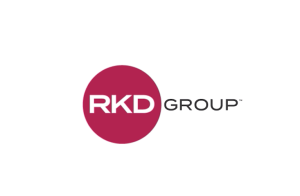Giving decreased 1.4 percent during 2019 compared to 2018, but remained 6 percent greater than in 2017, according to data in the 2019 Fourth Quarter Report of the Fundraising Effectiveness Project (FEP).
There was a dramatic drop in the number of new donors in 2019, and new donors from 2018 who gave again in 2019, of 5.7 percent and 6.4 percent respectively, trends that are unsustainable for the long-term success of philanthropy, according to the report’s authors.
The losses in donations were focused during the months of April to June of 2019, where giving year-to-date was down 5.7 percent through June. The charitable sector spent the remainder of the year climbing out of that deficit before ending up at a total loss of 1.4 percent. In a change from prior quarterly reports, revenue figures in this report were not adjusted for inflation.
“In 2019, we continued to see the trend of donors not keeping pace with dollars,” said Mike Geiger, MBA, CPA, president and CEO of the Association of Fundraising Professionals (AFP). “While there was a modest decline in donations in 2019, the money raised in 2019 is still higher than 2017. What we saw in 2018, then, was a surge in giving, and in 2019, a correction. The real question ahead is what impact the coronavirus will have on giving in 2020.”
One positive note was that the overall retention rate — the percentage of all donors making a gift to the same organization in 2018 and then again in 2019 — increased very slightly (0.03 percent) compared to last year’s rate. This number has been declining in recent years, and stopping that downward trend in 2019 is a good sign for the sector, according to the FEP authors.
The overall repeat retention rate (existing donors who gave in both 2018 and 2019) was nearly flat, dropping by 0.03 percentage points to 61.3 percent. The new donor retention rate was also flat, falling 0.02 percentage points to 20.3 percent.
“Losses in new, first-time donors is not unusual, but nonprofits should focus their time and budget on retaining current donors,” stated Jim Greenfield, ACFRE, FAFP, member of the Growth in Giving Initiative Steering Committee and long-time advocate of fundraising performance analysis. “Not only is their retention rate higher but is accompanied by their higher gift revenues than first-time donors.”
Lessons learned from The Great Recession
A recent study by the Fundraising Effectiveness Project showed a pattern between the U.S. financial markets and giving during the Great Recession. The study showed that donations increased slightly and then finally declined 10 months after the start of the Great Recession, and that the greatest impact was on donation size — not number of donors giving.
“As the entire world adjusts to the COVID-19 pandemic, uncertainty is everywhere.” said Jon Biedermann, president of The Biedermann Group and treasurer of AFP’s Growth in Giving Initiative. “The FEP data has been able to shed some light on what to expect with a declining stock market. A decline in donation size is imminent but should not be as drastic as the decline in the market.”
“While we don’t yet know the relationship with donors and a pandemic of this size, we have seen time and again that humanity shines brightest in our darkest days,” continued Biedermann. “All nonprofits, whether on the front lines or not, should continue to serve their missions and be confident that people will be there to support them.”
The 2020 Q1 Fundraising Report will reveal the impact of the coronavirus on nonprofits and will be available by May 15. To learn more and subscribe or download previous reports, visit www.afpfep.org
Data from the FEP’s 2019 Fourth Quarter Fundraising Report is based on a panel of 4,456 charities raising more than $4.7 billion in 2018 from the Growth in Giving Database. Organizations included in the panel for the quarterly reports have raised $5,000 or more from 25 or more donors in each of the past six years. Revenue figures have been adjusted for inflation.
To download the FEP’s 2019 Fourth Quarter Fundraising Report and other quarterly reports since 2017, and to learn about other tools to help measure fundraising effectiveness, visit www.afpfep.org
The Fundraising Effectiveness Project (first established in 2006) and the Growth in Giving database (created in 2012) are both administered by the Association of Fundraising Professionals. The Growth in Giving database has with more than 204 million donation transactions and is continuously updated by leading fundraising software thought leaders (in alphabetical order) Bloomerang, DonorPerfect, and NeonCRM. Additional partners include the 7th Day Adventists, The Biedermann Group, DataLake Nonprofit Research, and DonorTrends, a division of EveryAction.
For more information and how you and your fundraising software provider can participate, visit www.afpfep.org








